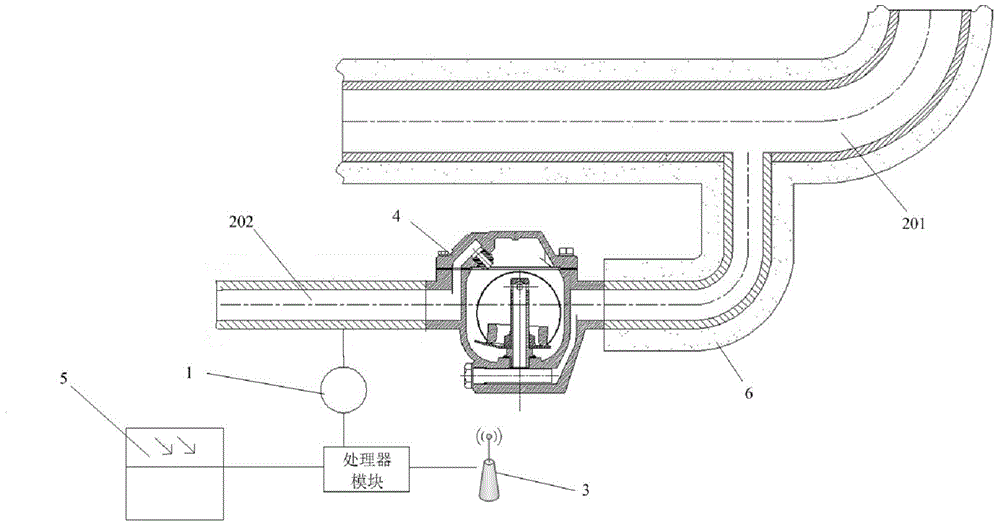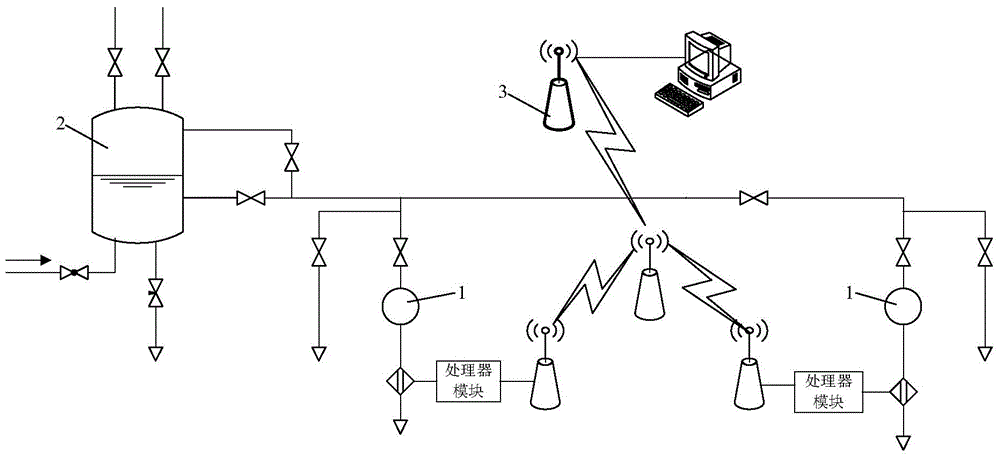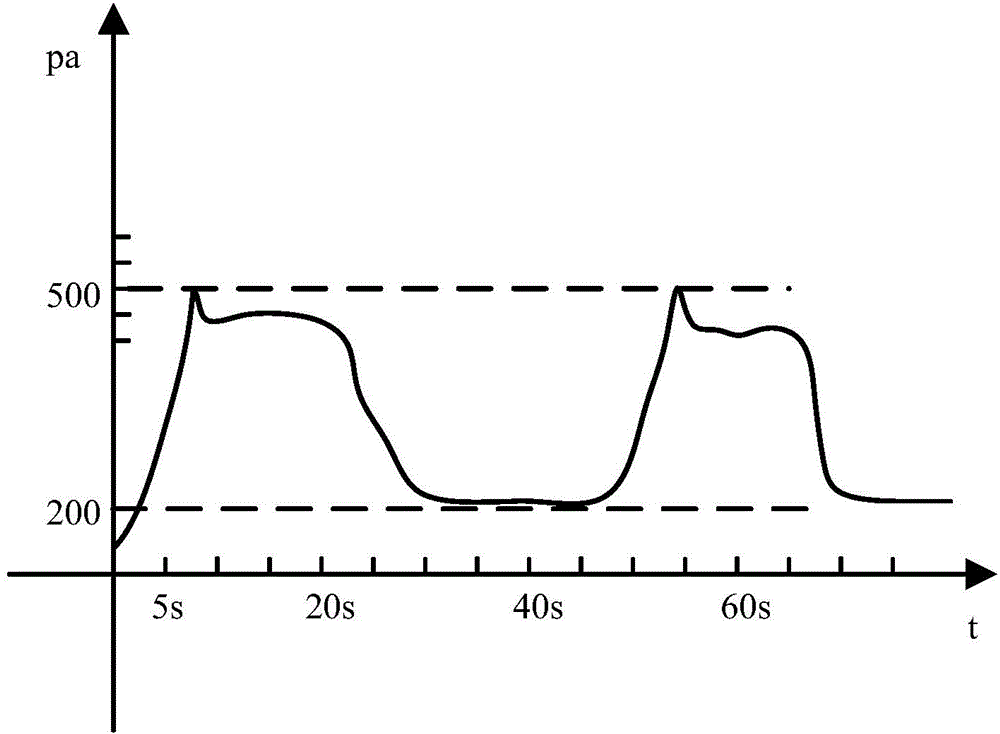Distributed wireless monitoring device and system for steam heat-supply network steam trap as well as working method
A wireless monitoring device and network trap technology, applied in the field of Internet of Things, can solve the problems of not being able to count the number of trap operations and life loss, not being able to provide early warning of trap failure, and inconvenient detection of traps, so as to reduce heat network loss, Likelihood-Reducing Effects
- Summary
- Abstract
- Description
- Claims
- Application Information
AI Technical Summary
Problems solved by technology
Method used
Image
Examples
Embodiment 1
[0026] Such as Figure 1 to Figure 4 As shown, a distributed wireless monitoring device of a steam heating network steam trap of the present invention includes: a pressure sensor 1, which is installed on the diversion pipe 202 of the steam trap 4, and is used to monitor when the steam trap 4 discharges condensed water. The pressure value of the flow pipeline 202; the processor module is connected with the pressure sensor 1 and the wireless transmission module 3, and is suitable for receiving the information on the normal drainage volume range of the pipeline where the steam trap is located from the monitoring center server, and analyzing the internal pressure of the steam trap diversion pipeline Value waveform, identify normal hydrophobic action information and fault characteristic information (for the analysis of characteristic value, please refer to the specific implementation content of embodiment 3) to judge whether there is a corresponding fault in the trap, and send the f...
Embodiment 2
[0037] Such as figure 1 and figure 2 As shown, on the basis of Embodiment 1, the present invention also provides a distributed wireless monitoring system for steam heating network traps, including: several distributed wireless monitoring devices, and a monitoring center connected to each distributed wireless monitoring device server.
[0038] The processor module judges whether a corresponding fault occurs in the steam trap according to the pressure waveform detected by the pressure sensor and combined with the fault feature information of the steam trap (faults are divided into leakage faults or blockage of the steam trap). For example: when the pressure value in the diversion pipe reaches or exceeds the set pressure threshold and continues to discharge, it is judged that the steam trap has a leakage failure.
[0039] And the processor receives from the monitoring center server the normal drainage range of the pipeline where it is located, and sends the steam trap fault si...
Embodiment 3
[0044] On the basis of Embodiment 1 and Embodiment 2, the present invention also provides a working method of a distributed wireless monitoring system of a steam heating network steam trap, including:
[0045] Step S1, obtaining the pressure waveform of the diversion pipeline; and
[0046] Step S2, obtain relevant parameters of the steam trap through the pressure waveform.
[0047] The method for obtaining the relevant parameters of the steam trap through the pressure waveform in the step S2 includes:
[0048] The processor module monitors the pressure waveform of the diversion pipeline when the steam trap is working through the pressure sensor, and sends the theoretical drainage volume of the pipeline to each steam trap from the server of the heating network monitoring center at regular intervals, and the fault alarm signal found by the steam trap monitoring device is sent from the Send to the monitoring center server, and the pressure waveform in the diversion pipeline is s...
PUM
 Login to View More
Login to View More Abstract
Description
Claims
Application Information
 Login to View More
Login to View More - R&D
- Intellectual Property
- Life Sciences
- Materials
- Tech Scout
- Unparalleled Data Quality
- Higher Quality Content
- 60% Fewer Hallucinations
Browse by: Latest US Patents, China's latest patents, Technical Efficacy Thesaurus, Application Domain, Technology Topic, Popular Technical Reports.
© 2025 PatSnap. All rights reserved.Legal|Privacy policy|Modern Slavery Act Transparency Statement|Sitemap|About US| Contact US: help@patsnap.com



